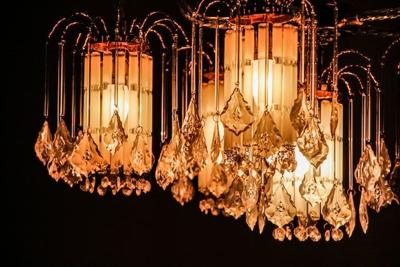
Baroque Venetian chandeliers are some of the most intricately designed and beautiful lights available. They originated in Venice, Italy, during the baroque period and have been prized for their intricate designs and craftsmanship.
Where Are They Originated From?
What makes a baroque Venetian chandelier so special? Many factors make these lights stand out from others. Firstly, they typically feature very ornate designs with lots of detailed work, often done using crystals or other delicate materials that add sparkle and shine to the light.
Secondly, baroque Venetian chandeliers are usually made with high-quality materials such as brass or gold, which gives them an extra luxurious feel. Finally, they often come with sophisticated features such as hanging crystal spheres or adjustable arms, which allow you to customize how it looks in your space.
If you're looking for a statement piece for your home décor, then a baroque Venetian chandelier is worth considering!
Characteristics that Make them Unique
There are a few key characteristics that make baroque Venetian chandeliers unique:
- They often have intricate designs and details which add extra sparkle and shine to the light.
- They are usually made with high-quality materials such as brass or gold, which gives them a different luxurious feel.
- They often come with sophisticated features such as hanging crystal spheres or adjustable arms, which allow you to customize how it looks in your space.
But what truly sets these chandeliers apart is their Swarovski crystal components. Swarovski crystals are considered some of the highest quality, and their elegantly faceted surfaces create a dazzling display when lit up. This intricate design and sparkling crystals make baroque Venetian chandeliers perfect for adding glamour and sophistication to any setting.
Found In Museums or Private Collections
Chandeliers have been a part of European culture since the Middle Ages when they provided light in large spaces like churches and palaces. Over time, their purpose shifted from functional lighting sources to decorative elements, and by the Baroque era, they had become iconic symbols of wealth and luxury.
The early Baroque period (1600-1650) was characterized by an interest in all things opulent and extravagant, reflected in the design of baroque Venetian chandeliers. These chandeliers often featured densely crowded compositions made up of cascading crystal chains, ornate metalwork, or both. They were typically quite large – measuring several feet across – so they could be seen from a distance even in grandiose settings like ballrooms or banquet halls.
In contrast to earlier styles which favored simple lines and muted colors, baroque Venetian chandeliers displayed extraordinary levels of detail with lots of gilding.
Tips For Those Who Are Interested in Purchasing
When it comes to baroque Venetian chandeliers, there are a few things you should keep in mind if you're thinking of purchasing one:
- Size matters – these chandeliers are typically quite large, so make sure you have enough space for them before making your purchase;
- Be prepared to pay a premium – because of their intricate design and high-quality materials, and baroque Venetian chandeliers tend to come with a hefty price tag; and
- Get ready for some serious bling factor – from the gilded scrollwork to the Swarovski crystals, and these fixtures are dripping in opulence!
If you're looking for a high-end, extravagant chandelier to make a statement in any room, click here and be prepared to get a top-quality product.




(0) comments
We welcome your comments
Log In
Post a comment as Guest
Keep it Clean. Please avoid obscene, vulgar, lewd, racist or sexually-oriented language.
PLEASE TURN OFF YOUR CAPS LOCK.
Don't Threaten. Threats of harming another person will not be tolerated.
Be Truthful. Don't knowingly lie about anyone or anything.
Be Nice. No racism, sexism or any sort of -ism that is degrading to another person.
Be Proactive. Use the 'Report' link on each comment to let us know of abusive posts.
Share with Us. We'd love to hear eyewitness accounts, the history behind an article.